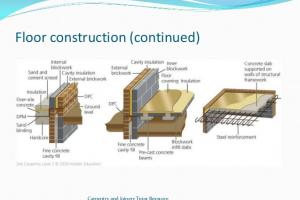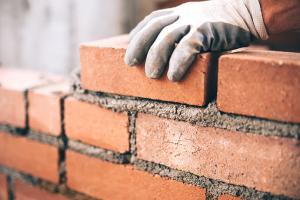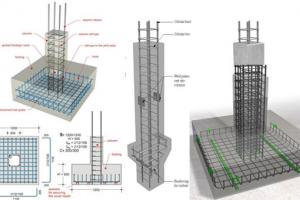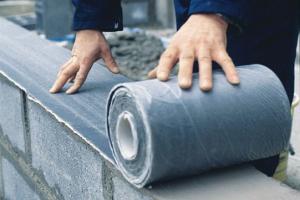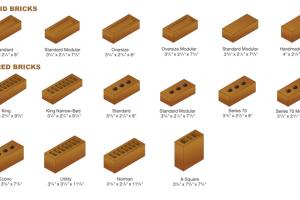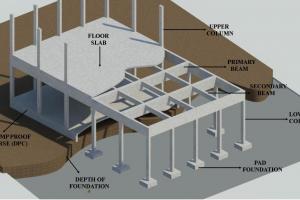Definition, Uses and Applications of Joint Fillers

Concrete Joint Fillers, expansion joint filler, concrete expansion joint filler
Definition
Joints fillers are the strips of some compressible material which is used to fill the expansion joints in different structure.
Joint fillers are essential materials in construction, used to fill gaps or joints between structural elements to prevent water infiltration, accommodate movement, and enhance durability. They play a critical role in ensuring the longevity and performance of structures such as roads, bridges, buildings, and pavements. This article explores the types, properties, applications, and benefits of joint fillers, along with real-world examples of their use in construction projects.
What Are Joint Fillers?
Joint fillers are materials designed to fill expansion joints, control joints, and other gaps in construction projects. These materials are flexible, durable, and resistant to environmental factors such as moisture, temperature changes, and chemical exposure. They help maintain the structural integrity of buildings and infrastructure by accommodating movement and preventing damage caused by thermal expansion, contraction, or settling.
Types of Joint Fillers
1. Preformed Joint Fillers
Preformed joint fillers are manufactured in specific shapes and sizes to fit into joints. They are commonly made from materials like cork, rubber, foam, or asphalt-impregnated fibers. These fillers are easy to install and provide excellent resistance to compression and weathering.
-
Applications: Used in concrete pavements, bridges, and expansion joints in buildings.
-
Example: Cork joint fillers are often used in road construction to accommodate thermal expansion.
2. Liquid Joint Fillers
Liquid joint fillers, also known as sealants, are applied in a liquid state and cure to form a flexible, waterproof barrier. They are typically made from silicone, polyurethane, or polysulfide compounds.
-
Applications: Ideal for sealing joints in concrete floors, walls, and roofs.
-
Example: Polyurethane sealants are widely used in residential and commercial buildings to seal gaps around windows and doors.
3. Foam Joint Fillers
Foam joint fillers are lightweight, compressible materials made from closed-cell polyethylene or polyurethane foam. They are highly flexible and provide excellent insulation properties.
-
Applications: Used in expansion joints of concrete slabs, highways, and airport runways.
-
Example: Polyethylene foam fillers are commonly used in highway construction to prevent cracking due to temperature changes.
4. Fiberboard Joint Fillers
Fiberboard joint fillers are made from wood or cellulose fibers bonded with asphalt or other adhesives. They are rigid yet compressible, making them suitable for heavy-duty applications.
-
Applications: Used in large concrete structures such as dams, bridges, and industrial floors.
-
Example: Asphalt-impregnated fiberboard is often used in bridge expansion joints.
Uses of Joint Fillers in Construction
1. Expansion Joints
Expansion joints are gaps designed to allow for the thermal expansion and contraction of materials. Joint fillers in these areas prevent debris and water from entering while accommodating movement.
-
Example: In highway construction, foam joint fillers are used to prevent cracking caused by temperature fluctuations.
2. Control Joints
Control joints are intentional cuts or grooves in concrete to control where cracks occur. Joint fillers in these areas help maintain the structural integrity of the concrete.
-
Example: Liquid joint fillers are used in concrete floors to seal control joints and prevent water infiltration.
3. Construction Joints
Construction joints are formed when concrete is poured at different times. Joint fillers ensure a seamless transition between sections and prevent cracking.
-
Example: Preformed cork fillers are used in large concrete slabs to accommodate settling and movement.
4. Isolation Joints
Isolation joints separate concrete from other structures, such as walls or columns, to prevent stress caused by differential movement.
-
Example: Fiberboard joint fillers are used in industrial floors to isolate machinery bases from the main slab.
Benefits of Using Joint Fillers
1. Prevents Water Infiltration
Joint fillers create a waterproof barrier, preventing water from seeping into joints and causing damage.
2. Accommodates Movement
Joint fillers are flexible and can accommodate thermal expansion, contraction, and settling, reducing the risk of cracks.
3. Enhances Durability
By protecting joints from environmental factors, joint fillers extend the lifespan of structures.
4. Improves Aesthetics
Joint fillers provide a clean, finished look to construction projects, especially in visible areas like floors and walls.
5. Cost-Effective
Using joint fillers reduces maintenance costs by preventing damage and extending the life of structures.
Real-World Applications of Joint Fillers
1. Highway Construction
Joint fillers are extensively used in highway construction to prevent cracking and ensure smooth, durable road surfaces. Foam and preformed fillers are commonly used in expansion joints.
2. Bridge Expansion Joints
Bridges require robust joint fillers to accommodate movement caused by traffic loads and temperature changes. Fiberboard and rubber fillers are often used in these applications.
3. Industrial Floors
In industrial settings, joint fillers are used to isolate heavy machinery and prevent cracks in concrete floors. Polyurethane sealants and foam fillers are popular choices.
4. Residential Construction
Liquid joint fillers, such as silicone and polyurethane sealants, are widely used in homes to seal gaps around windows, doors, and plumbing fixtures.
5. Airport Runways
Airport runways use high-performance joint fillers to withstand heavy loads and temperature changes. Foam and rubber fillers are commonly used in these critical applications.
Challenges and Considerations
1. Material Selection
Choosing the right joint filler depends on factors such as the type of joint, expected movement, and environmental conditions.
2. Installation
Proper installation is crucial for the effectiveness of joint fillers. Poorly installed fillers can lead to joint failure and structural damage.
3. Durability
Joint fillers must withstand environmental factors such as UV exposure, moisture, and chemical exposure. Selecting high-quality materials ensures long-term performance.
4. Maintenance
Regular inspection and maintenance of joint fillers are necessary to ensure their continued effectiveness.
Related pages
Requirements of a good joint filler



